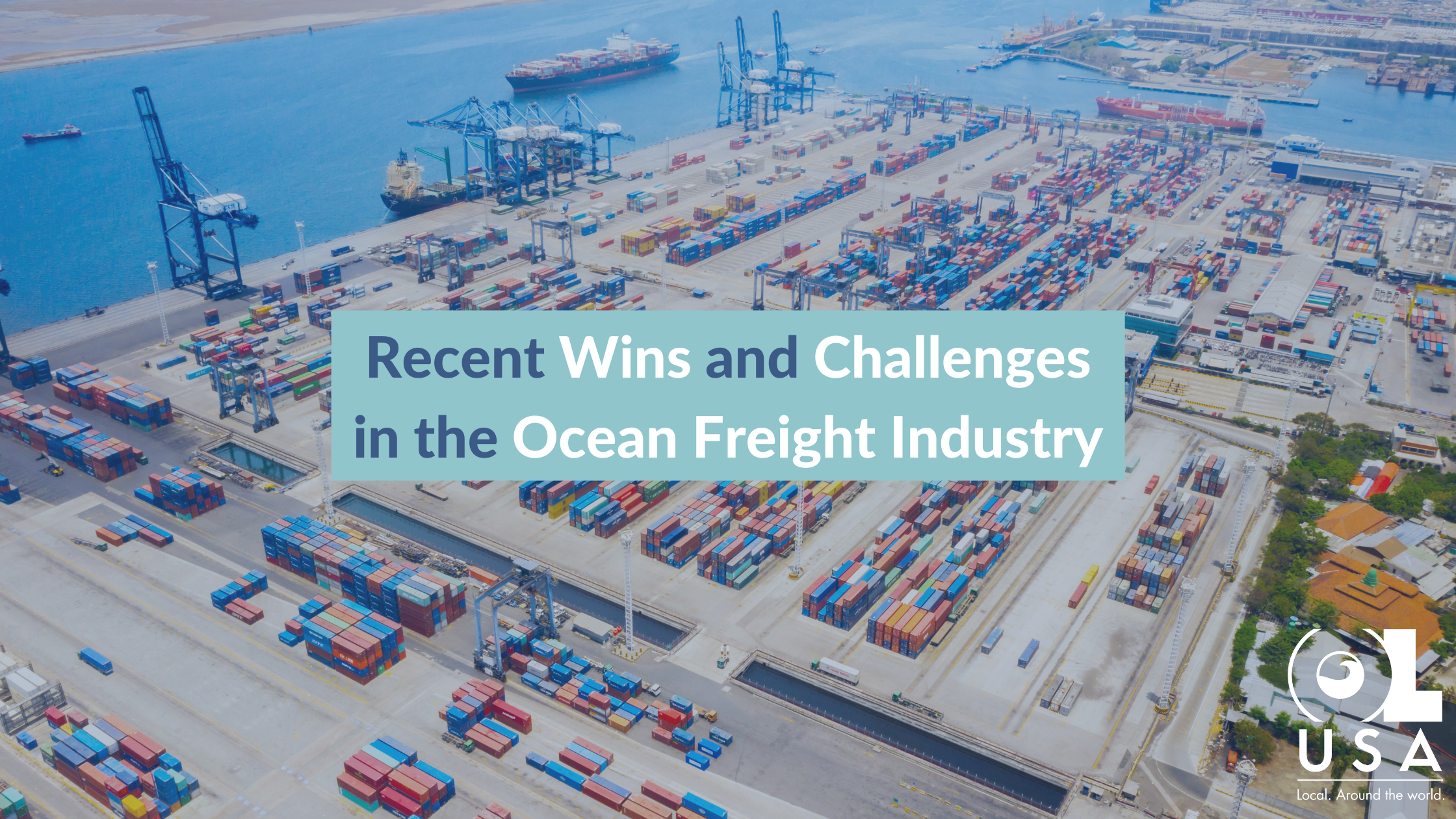COVID-19 hit the ocean freight industry hard. First, it was the disruptions, as global supply chains crashed under historical consumer demand and sky-high expectations aired with equally meteoric slowdowns and shutdowns.
But the rapid evolution of shipping and logistics didn’t stop as pandemic-time regulations lifted. Industry leaders now have the tools, insights, and track records to keep pace with consumer demand, heightened expectations, and other unique complexities that define the post-COVID landscape. And by continuing to build on three key fronts—digitization and automation, infrastructure, and alternative transportation routes—the ocean freight industry can keep building on its recent wins, benefitting manufacturers, carriers, and consumers. Here’s what it looks like.
#1. Accelerating the impact of digitization and automation
One of the most notable industry success stories is the rapid digital transformation emerging from pandemic demands. To enhance efficiency and reduce costs, the industry had to quickly lean into digitalization and automation—technologies like blockchain, artificial intelligence, and the Internet of Things (IoT) were no longer for early adopters but, instead, become mainstream, streamlining operations, enhancing visibility, and improving supply chain management.
Now, these high-tech solutions are table stakes. Shippers track cargo in real time, reducing delays and boosting customer satisfaction.
#2. Increasing infrastructure investments
Over the last three years, the U.S. government and private sector have substantially invested in port infrastructure and logistics networks. Upgrades to ports and other large-scale projects like the Panama Canal expansion have increased the capacity for larger vessels, enabling faster, more reliable transit times. This has been a major win for shippers and clients—now, teams can transport larger volumes of goods in less time, bringing costs down and efficiency up.
#3. Alternative transportation route
To mitigate risks associated with COVID-time congestion and delays, U.S. logistics providers were pushed to explore alternative transportation routes. Many decision-makers focused on diversifying ports of entry and looking to intermodal options such as rail and trucking to optimize transportation networks. These alternative routes provided shippers and clients with increased flexibility and improved supply chain resilience—a benefit then and now.
Infrastructure investments mentioned above have also supported these alternative routes. The federal government has invested billions of dollars in infrastructure projects such as roads, railroads, and ports. This investment has enabled the industry to keep pace with the increasing demand for shipping and has helped reduce congestion, especially in ports and highways.
Challenges after the COVID-19 shipping surge
Despite these recent wins, the ocean freight industry faces unique challenges—many coming out of the COVID-19 shakeups.
One of the major hurdles: container shortages and imbalances. The pandemic-powered surge in demand and disruptions in global trade led to container shortages and imbalances. The unequal global distribution of empty containers drove added delays and increased costs for shippers and clients. Addressing this challenge requires improved container management and a more balanced global supply.
Likewise, port congestion was and continues to be a significant issue in major U.S. gateways. Increased volumes and labor shortages led to delays in vessel berthing, longer turnaround times, and increased dwell times for containers. To overcome these hurdles, shippers and carriers must find new methods to support these congested ports, or we’ll continue to experience extended lead times and higher transport costs.
Lastly, freight rate volatility continues to disrupt supply-demand dynamics. This volatility began during the pandemic shipping surge when rate fluctuations made it harder and harder for shippers and clients to forecast costs accurately. Early in the pandemic, shipping surged, which drove rates up as carriers struggled to keep pace with demand. These rate spikes created significant financial burdens on shippers and clients who, almost overnight, had to pay more for shipping their goods. Additionally, the surge in demand made it difficult for shippers and carriers to predict shipping times, which led to increased uncertainty and risk.
Despite the supply chain beginning to level off and stabilize, shippers and clients need help with cost estimation. The industry must establish transparent pricing mechanisms and foster long-term partnerships to mitigate these uncertainties.
Moving forward with predictability and consistency
Given these challenges, shippers, carriers, and clients must reimagine their workflows with expectations that better align with the new freight landscape. One key consideration? Flexibility. Shippers must be prepared to adapt to changing circumstances, such as delays in shipping times or container shortages. Organizations may also consider alternative modes of transportation, such as air freight, to ensure goods arrive on time.
Carriers must also be prepared to be flexible, as they may need to adjust routes and schedules to meet changing demand—investing in new technology, such as predictive analytics, can help better predict demand and ensure carriers can meet customer needs.
Clients, too, need to embrace this more flexible mindset. On the client side, ordering and delivery schedules may need to be adjusted to account for delays or shortages. Clients may also need to consider alternative suppliers or transportation modes to ensure they can continue meeting customer demand.
Given these unified hurdles, stakeholders from all corners of the supply chain must also commit to greater collaboration and support. Shippers, carriers, and clients must work together to identify and address challenges and to find solutions that benefit everyone. This may involve sharing data and insights or working together to develop new technologies or processes that improve efficiency and reduce costs. With that added clarity and transparency, organizations will be best equipped to accelerate shipping and delivery and boost customer satisfaction and end-to-end success.



